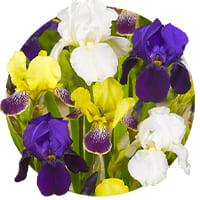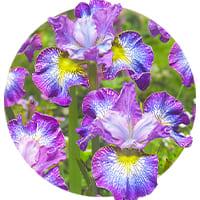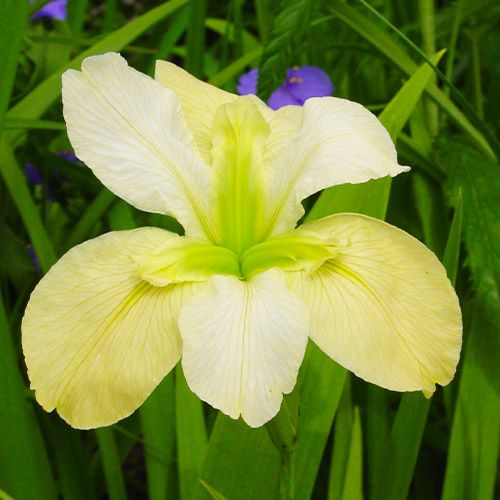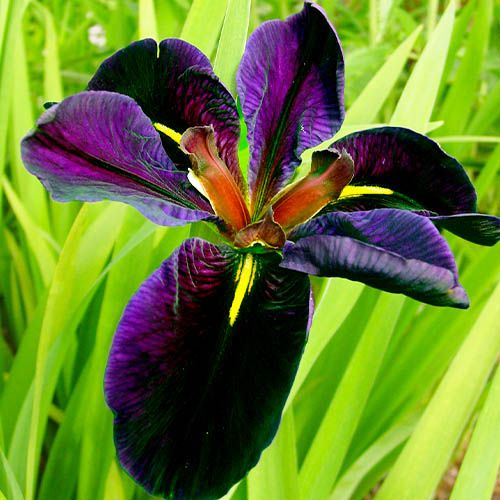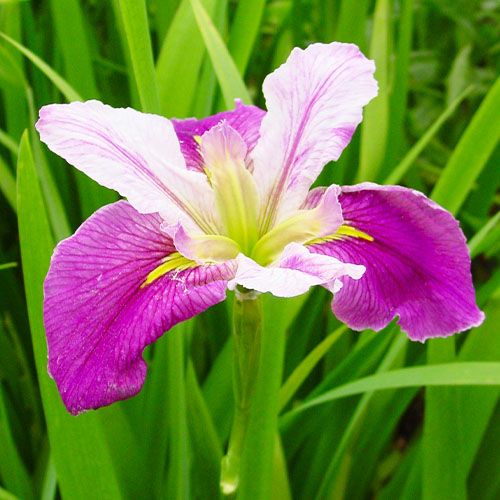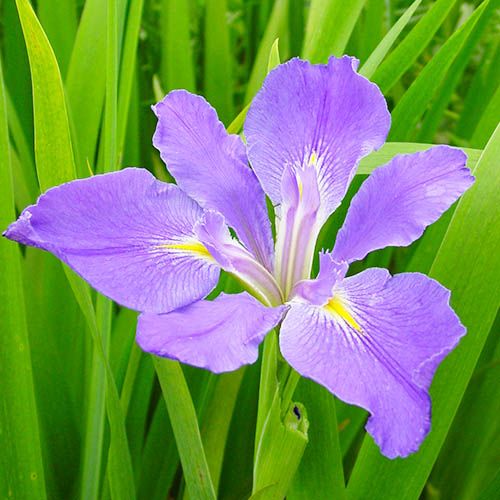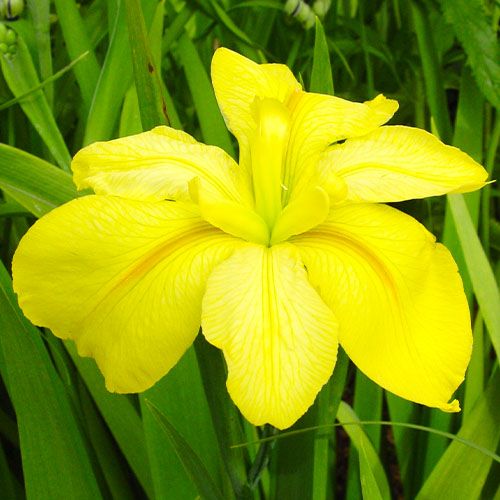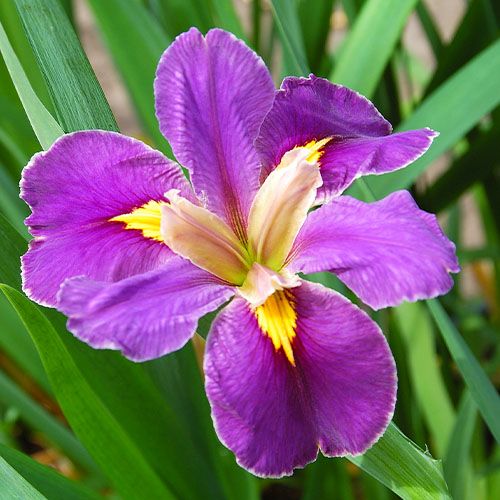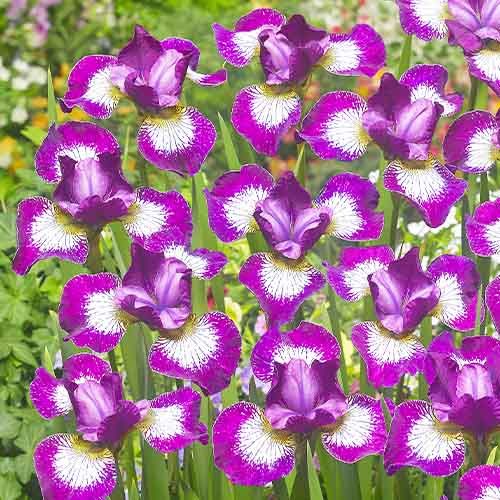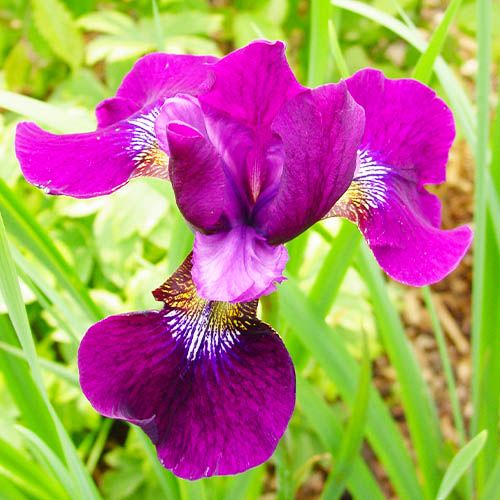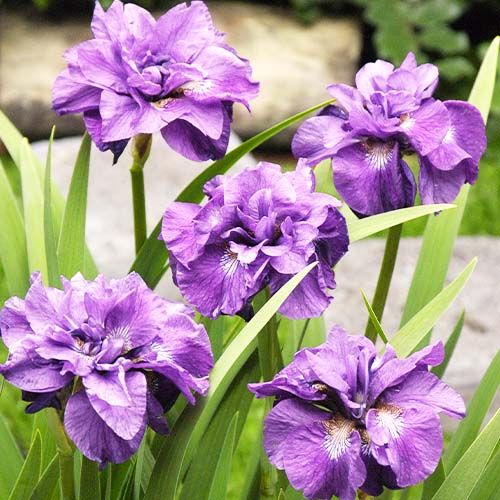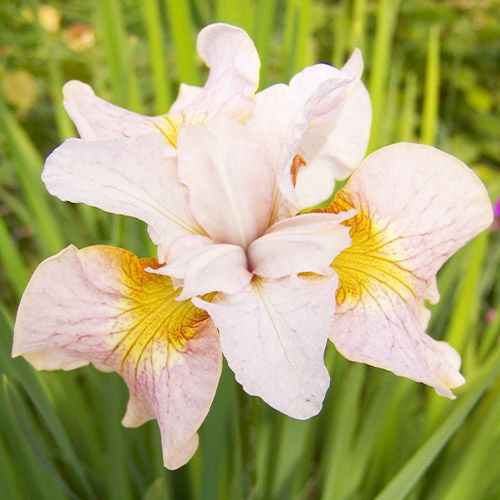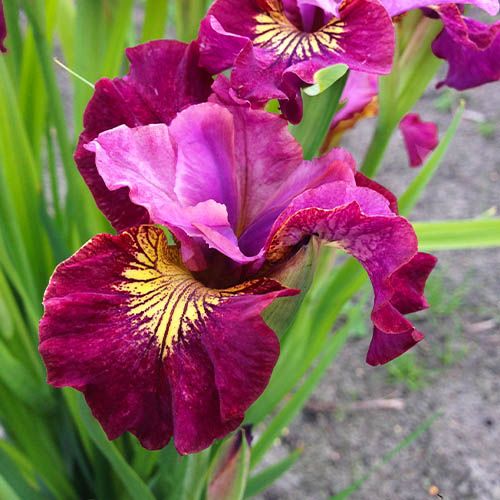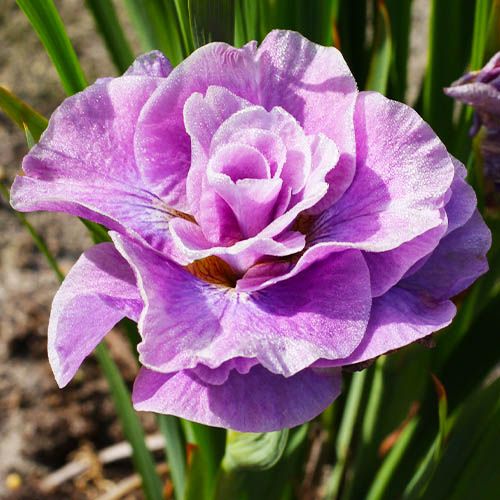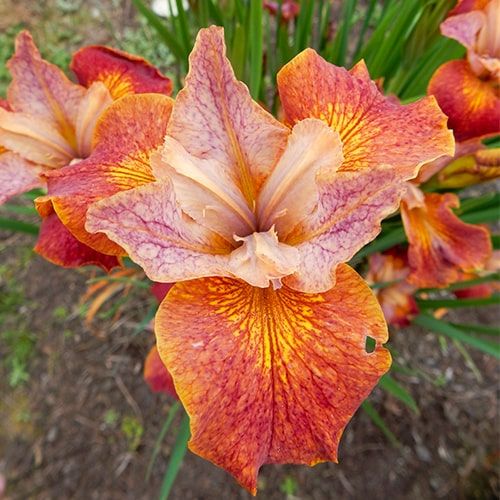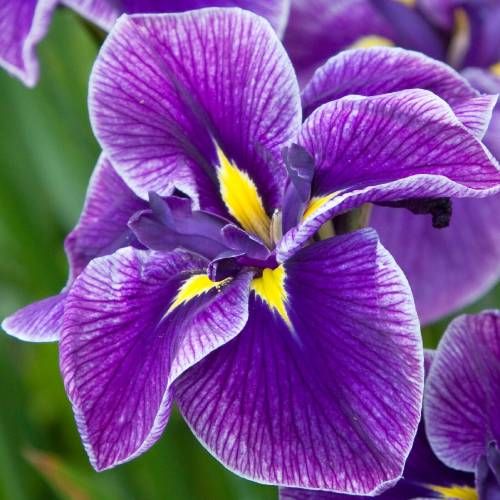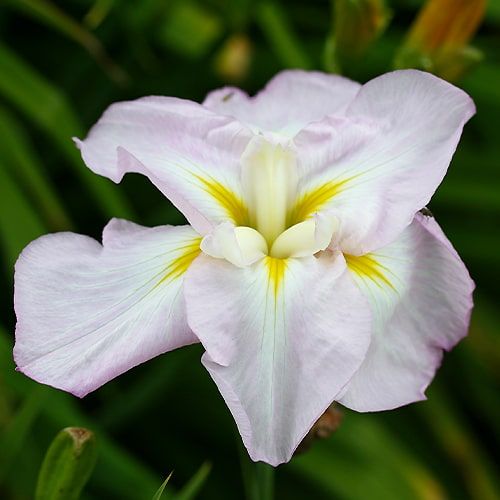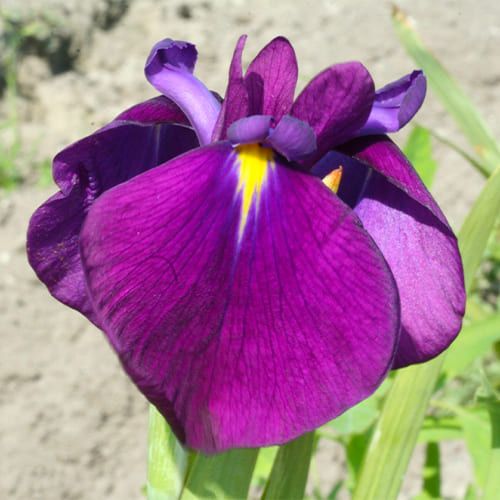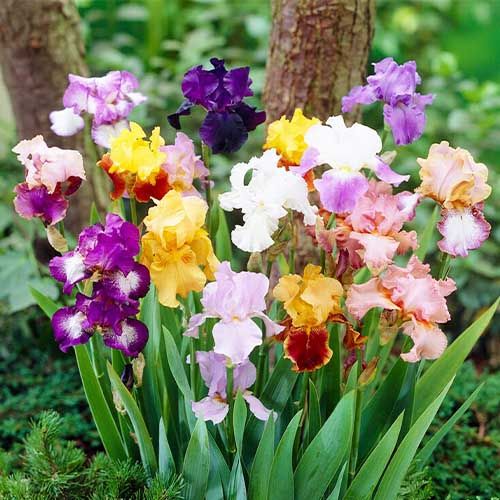
Iris Perennials
Iris Perennials Bare-Root Plants
- -40%
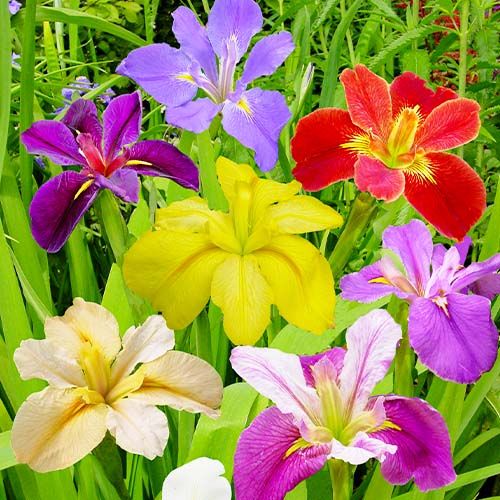
- -40%
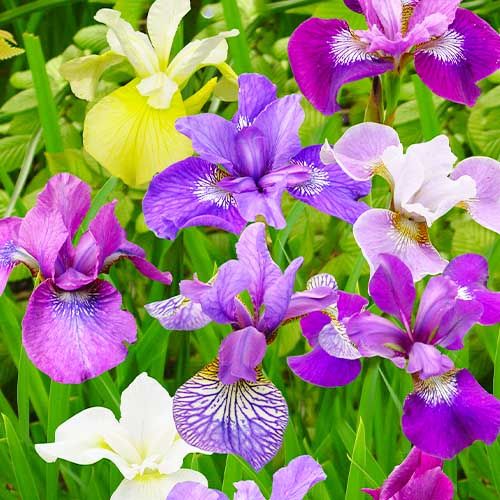 Iris Siberica (Siberian) Breeders CollectionSku: 12032655 bare-root plants in pkgIn stock€7,96 €13,27
Iris Siberica (Siberian) Breeders CollectionSku: 12032655 bare-root plants in pkgIn stock€7,96 €13,27 - -40%

- -30%
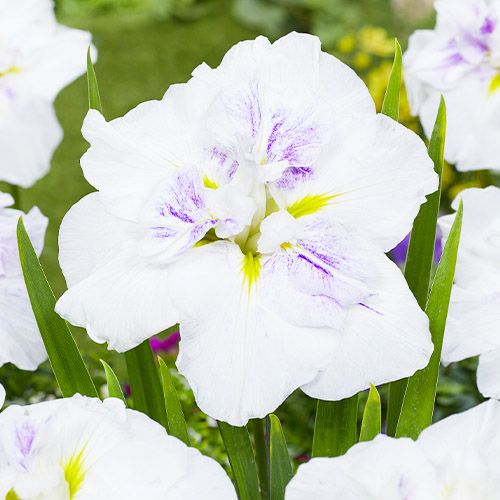 Iris Ensata (Japanese Iris) Dinner Plate CupcakeSku: 12030151 bare-root plant in pkgIn stock€4,16 €5,95
Iris Ensata (Japanese Iris) Dinner Plate CupcakeSku: 12030151 bare-root plant in pkgIn stock€4,16 €5,95 - -40%
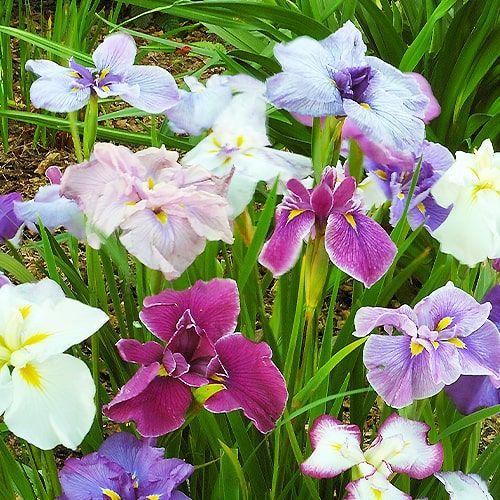 Iris Ensata (Japanese Iris) Breeders CollectionSku: 12033135 bare-root plants in pkgIn stock€11,97 €19,95
Iris Ensata (Japanese Iris) Breeders CollectionSku: 12033135 bare-root plants in pkgIn stock€11,97 €19,95 - -40%
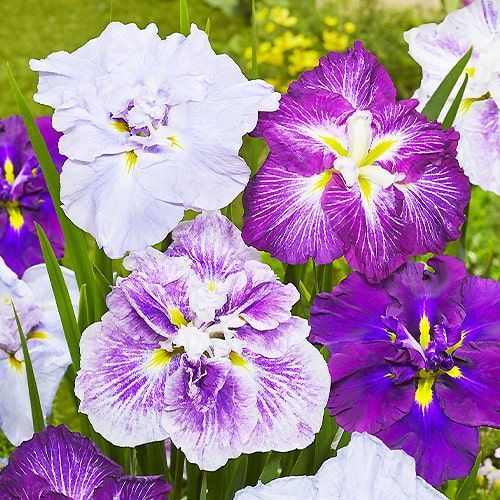
- -30%
 Iris Ensata (Japanese Iris) Dinner Plate Jell-OSku: 12030111 bare-root plant in pkgIn stock€4,16 €5,95
Iris Ensata (Japanese Iris) Dinner Plate Jell-OSku: 12030111 bare-root plant in pkgIn stock€4,16 €5,95 - -30%
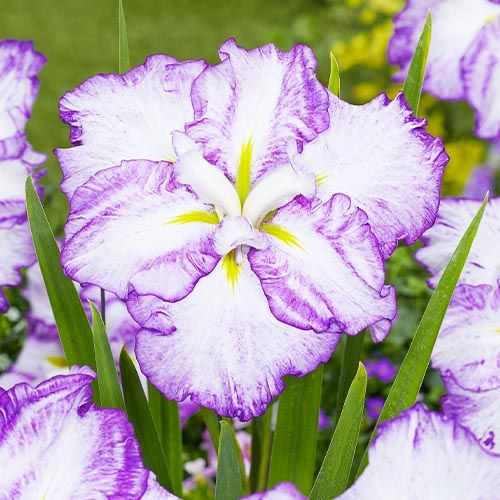 Iris Ensata (Japanese Iris) Dinner Plate TiramisuSku: 12030061 bare-root plant in pkgIn stock€4,16 €5,95
Iris Ensata (Japanese Iris) Dinner Plate TiramisuSku: 12030061 bare-root plant in pkgIn stock€4,16 €5,95 - -30%
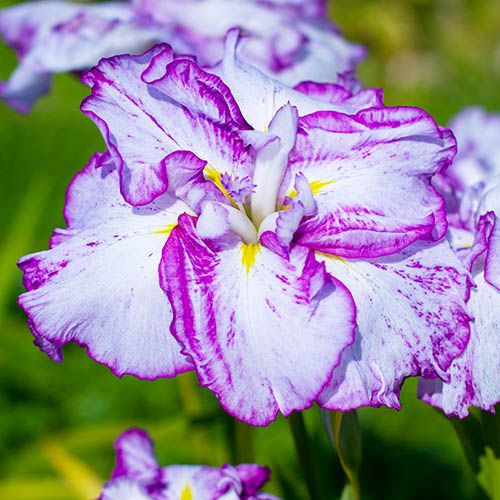 Iris Ensata (Japanese Iris) HarlequinesqueSku: 12030171 bare-root plant in pkgIn stock€3,88 €5,55
Iris Ensata (Japanese Iris) HarlequinesqueSku: 12030171 bare-root plant in pkgIn stock€3,88 €5,55 - -30%
- -30%
- -30%
- -30%
- -30%Iris Germanica (Bearded Iris) Collection 5 (plants/coulours)Sku: 12031285 bare-root plants in pkgOut of stock€9,29
Last Reviews
Discover the Beauty of Iris Perennials
Iris perennials are renowned for their exquisite beauty and stunning array of colors, making them a beloved choice for gardeners worldwide. With their elegant blooms and graceful foliage, iris perennials add a touch of charm and sophistication to any garden or landscape. Whether planted in borders, rock gardens, or containers, these perennial beauties never fail to captivate with their timeless allure.
How to Choose the Best Iris Perennials Plants for Sale
When selecting iris perennial plants for sale for your garden, it's crucial to consider the types and varieties available to ensure you choose the perfect ones for your landscape. Here's a look at some popular types and varieties of iris perennials!
Types and Varieties of Iris Perennials
Most popular iris perennials varieties include:
- Iris Siberica (Siberian) Paprikash: Known for its stunning deep orange blooms, Iris Siberica Paprikash adds a vibrant pop of color to any garden or landscape.
- Iris Louisiana Heather Stream: With its delicate lavender-blue flowers and graceful foliage, Iris Louisiana Heather Stream brings a touch of elegance to water gardens or moist, boggy areas.
- Iris Louisiana Laura Louise: Featuring charming pale pink blooms and slender, upright stems, Iris Louisiana Laura Louise adds a soft and romantic feel to garden beds or borders.
- Iris Ensata Lady in Waiting: This variety showcases large, ruffled flowers in shades of purple and white, creating a striking focal point in any garden or landscape design.
- Iris Siberica (Siberian) See Ya Later: Iris Siberica See Ya Later boasts stunning sky-blue blooms and slender, grass-like foliage, making it a standout choice for adding color and texture to garden beds or containers.
Growing Iris Perennials: Planting and Care
Growing iris perennials is relatively straightforward, but they do require proper planting and care to thrive and flourish. Here are some essential tips for planting and caring for your iris perennials.
Preparing the Soil for Iris Perennials
Before planting iris perennials, prepare the soil by ensuring it is well-draining and enriched with organic matter. Iris prefer slightly acidic to neutral soil conditions, so adding compost or aged manure can help improve soil fertility and structure.
Planting Iris Perennial Bulbs
When planting your Dutch bulbs, choose a sunny or partially shaded location with well-drained soil. Dig a hole large enough to accommodate the roots and gently spread them out in the hole. Cover the roots with soil and water thoroughly to settle the soil around these Netherlands bulbs.
Caring for Your Iris Perennials
Caring for iris perennials involves regular watering, fertilizing, and maintenance to ensure healthy growth and abundant blooms. Water deeply and evenly during the growing season, especially during hot, dry weather. Fertilize iris perennials annually in early spring with a balanced fertilizer to promote vigorous growth and flowering. Remove spent flowers and dead foliage promptly to encourage continuous blooming and prevent disease.
Tips for Extending the Blooming Season of Iris Perennials
To prolong the beauty of your iris perennials and enjoy their stunning blooms for as long as possible, consider implementing the following tips:
1. Deadhead spent flowers: Regularly remove faded blooms to encourage the plant to produce more flowers throughout the season.
2. Fertilize regularly: Feed your iris perennials with a balanced fertilizer every four to six weeks during the growing season to promote healthy growth and continuous blooming.
3. Provide adequate water: Iris perennials prefer consistently moist soil, especially during the blooming season. Water deeply and regularly, particularly during hot, dry periods, to ensure the plants remain hydrated and healthy.
4. Mulch around the base: Apply a layer of organic mulch, such as shredded bark or compost, around the base of the plants to help retain moisture in the soil and regulate temperature fluctuations, which can extend the blooming period.
5. Divide overcrowded clumps: If your iris perennials become overcrowded or stop blooming as abundantly, divide the clumps every few years in late summer or early fall. This allows for better airflow and nutrient uptake, rejuvenating the plants and promoting a longer blooming season.
By following these simple tips, you can enjoy the beauty of your iris perennials for an extended period, enhancing the visual appeal of your garden and landscape throughout the growing season.
Buy Iris Perennials from Holland
Ready to add the timeless beauty of iris perennials to your garden? Buy iris perennials bulbs in our online store today! Holland offers a wide selection of premium iris perennials guaranteed to enhance the beauty of your garden and landscape.
Order iris perennials bulbs from Holland and create a stunning floral display that will delight for years to come. With their exquisite blooms and graceful foliage, iris perennials are sure to be a highlight of your garden and a source of joy for seasons to come.
Frequently asked questions about Spring Flowering Iris Perennials
When to plant perennial iris?
Can I get help selecting irises?
Do perennial irises need full sun?
Irises are light-requiring. But they can bloom under a tree, especially in the southern regions. They love the sun, moisture, and well-heated, fertile, loose soil. Check these varieties to adorn your garden: Iris Germanica and different Iris Bulbs. They will look great in any part of the garden.
Are there any tips for caring for irises indoors?
Irises do best outdoors, but they can also be grown indoors. Make sure you get enough sunlight and keep the soil evenly moist. It is advisable to overwinter them outdoors if the climate permits.
How to care for perennial iris?
Various Iris species require care. In autumn, yellow leaves with brown spots must be removed. In exotic species, the leaves are cut to half the length. In late autumn, heat-loving varieties are sheltered. In early spring, hurry to take off the cover. If you want to have more perennials, check peonies, crocosmias, and hostas.
When do irises flower?
Irises usually flower in late spring to early summer, depending on the variety and climatic conditions. Their flowers often come in a variety of colours, including blue, purple, white, yellow and more.
What kind of irises are popular?
Can I buy Dutch irises in your shop?
Yes, you can purchase a variety of irises and other flowers and plants from our online flower and plant shop. Simply visit our website, browse through our range and select the irises you want.
What care do Danish irises need?
Irises are relatively easy to care for. They need full sun or partial shade and well-drained soil. Regular watering and occasional fertilisation promote growth and flowering. You should also cut off faded flower stems to keep the plant healthy.











